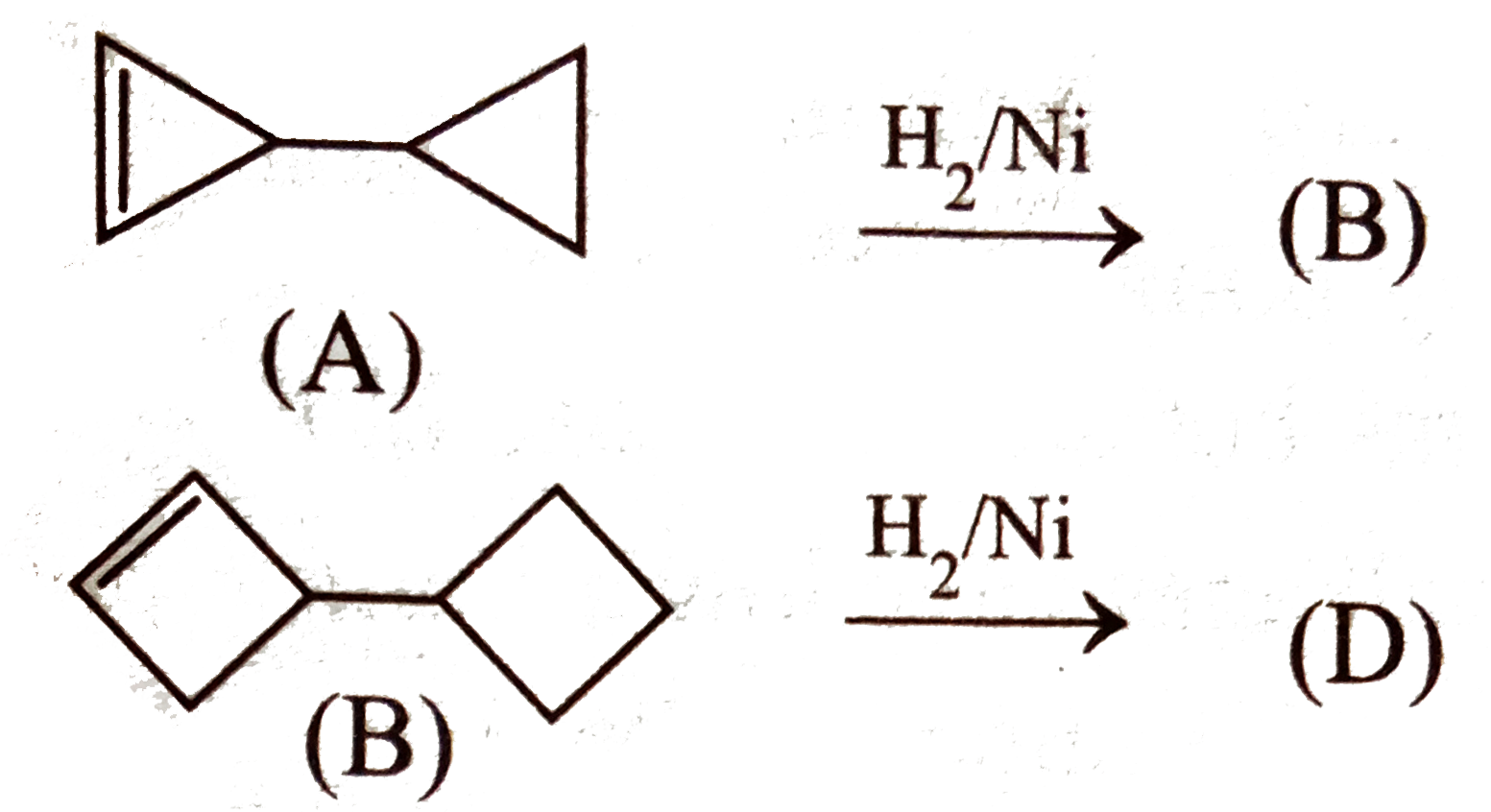Read the following statements.
P : The taxonomic hierarchy for Brassica campectris can be written as
Plante → Phanerogamae → Angiospermae → Dicotyledonae → Parietals → Brassicaces → Brassica → campestris.
Q : Tautonym is the taxonomic designation used for certain plants having trinomial nomenclature.
R : A chaaracter present in an ancestral species and shared exclusively by its evolutionary descendants is referred to as synapomorphy.
S : Family Fabaceae is divided into three sub-families, i.e., Leguminosa, Mimosaceae and Caesalpiniaceae.
Whcih of the following combinations of above statements is correct ?
P and Q
P and R
R and S
P, R and S
The correct Answer is:B
To determine which of the statements (P, Q, R, S) are correct, we will analyze each one step by step.
Step 1: Analyze Statement P
- Statement P: The taxonomic hierarchy for Brassica campestris can be written as Plantae → Phanerogamae → Angiospermae → Dicotyledonae → Parietals → Brassicaceae → Brassica → campestris.
- Analysis: This statement correctly outlines the taxonomic hierarchy.
- Kingdom: Plantae
- Subkingdom: Phanerogamae
- Division: Angiospermae
- Class: Dicotyledonae
- Order: Parietales
- Family: Brassicaceae
- Genus: Brassica
- Species: campestris
- Conclusion: Statement P is correct.
Step 2: Analyze Statement Q
- Statement Q: Tautonym is the taxonomic designation used for certain plants having trinomial nomenclature.
- Analysis: This statement is incorrect because "tautonym" refers to a naming convention where the genus and species names are the same, which is primarily used in zoology, not for plants. Trinomial nomenclature is used for subspecies or varieties, not for tautonyms.
- Conclusion: Statement Q is incorrect.
Step 3: Analyze Statement R
- Statement R: A character present in an ancestral species and shared exclusively by its evolutionary descendants is referred to as synapomorphy.
- Analysis: This statement is correct. Synapomorphy refers to shared derived characteristics that are used to define a group of organisms based on their evolutionary relationships.
- Conclusion: Statement R is correct.
Step 4: Analyze Statement S
- Statement S: Family Fabaceae is divided into three sub-families, i.e., Leguminosae, Mimosaceae, and Caesalpiniaceae.
- Analysis: This statement is incorrect. Fabaceae is the family name, and it is divided into three subfamilies, which are:
- Faboideae (often referred to as Leguminosae)
- Mimosoideae
- Caesalpinioideae
- Conclusion: Statement S is incorrect.
Final Conclusion
The correct statements are P and R. Therefore, the combination of correct statements is P and R.
Summary of Correct Statements
- Correct Statements: P and R
- Incorrect Statements: Q and S
---
- Statement P: The taxonomic hierarchy for Brassica campestris can be written as Plantae → Phanerogamae → Angiospermae → Dicotyledonae → Parietals → Brassicaceae → Brassica → campestris.
- Analysis: This statement correctly outlines the taxonomic hierarchy.
- Kingdom: Plantae
- Subkingdom: Phanerogamae
- Division: Angiospermae
- Class: Dicotyledonae
- Order: Parietales
- Family: Brassicaceae
- Genus: Brassica
- Species: campestris
- Conclusion: Statement P is correct.
- Statement Q: Tautonym is the taxonomic designation used for certain plants having trinomial nomenclature.
- Analysis: This statement is incorrect because "tautonym" refers to a naming convention where the genus and species names are the same, which is primarily used in zoology, not for plants. Trinomial nomenclature is used for subspecies or varieties, not for tautonyms.
- Conclusion: Statement Q is incorrect.
- Statement R: A character present in an ancestral species and shared exclusively by its evolutionary descendants is referred to as synapomorphy.
- Analysis: This statement is correct. Synapomorphy refers to shared derived characteristics that are used to define a group of organisms based on their evolutionary relationships.
- Conclusion: Statement R is correct.
- Statement S: Family Fabaceae is divided into three sub-families, i.e., Leguminosae, Mimosaceae, and Caesalpiniaceae.
- Analysis: This statement is incorrect. Fabaceae is the family name, and it is divided into three subfamilies, which are:
- Faboideae (often referred to as Leguminosae)
- Mimosoideae
- Caesalpinioideae
- Conclusion: Statement S is incorrect.
The correct statements are P and R. Therefore, the combination of correct statements is P and R.
- Correct Statements: P and R
- Incorrect Statements: Q and S
Topper's Solved these Questions
- THE LIVING WORLDBook:NCERT FINGERTPS ENGLISHChapter:THE LIVING WORLDExercise:NCERT
Explore 10 Videos
- THE LIVING WORLDBook:NCERT FINGERTPS ENGLISHChapter:THE LIVING WORLDExercise:Assertion & Reason
Explore 15 Videos
- THE LIVING WORLDBook:NCERT FINGERTPS ENGLISHChapter:THE LIVING WORLDExercise:MCQ
Explore 94 Videos
- TEST PAPERBook:NCERT FINGERTPS ENGLISHChapter:TEST PAPERExercise:Test Paper 3
Explore 50 Videos
- TRANSPORT IN PLANTSBook:NCERT FINGERTPS ENGLISHChapter:TRANSPORT IN PLANTSExercise:Transport In Plants
Explore 119 Videos
Similar Questions
Write the converse and contrapositive for the statement p⇒q.
View SolutionIdentify the possible link ''A'' in the following food chain
Plant → insect frog → ''A'' → Eagle
View SolutionFill in the blanks A and B
Kingdom → Phylum → [A] → Order → [B]
View SolutionRewrite the following in their correct sequence in a food chain :
Snake → Grasshopper → Grass → Frog
View SolutionWhich of the statements is/are correct about the following reactions ?
 H2/Ni−−−→ H2/Ni−−−→
H2/Ni−−−→ H2/Ni−−−→
View SolutionIdentify the possible link ''A'' in the following food chain : Plant → insect → frog → ''A'' → eagle:
View SolutionWhich of the following representation is incorrect for vector equation →R=→P+→Q

View SolutionLet P, Q, R and S be statement and suppose that P→Q→R→P. If ~S→R, then
View SolutionProjection of →P on →Q is :
View SolutionSelect the correct sequence of meninges from inside to outside
(a) Duramater → arachnoid membrane → Piamater
(b) Duramater → Piamater → arachnoid membrane
(c) Piamater →arachnoid membrane → duramater
(d) Arachnoid membrane → duramater → piamater
View Solution

